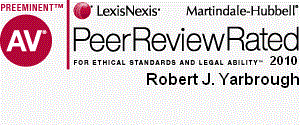Newsletter Issue 12 - February 2010
In this Issue:
Intent-to-use trademark
applications and the Internet.
Is plagiarism copyright infringement?.
Proper patent marking.
When is a product 'sold' for patent infringement?
Intent-to-use trademark applications and the power of the Internet.
by Adam Garson
The U.S. Patent and Trademark Office ("USPTO") permits trademark owners to file a registration application even before the owner actually uses a trademark so long as the owner has a bona fide intention to use it in interstate commerce. The so-call "Intent-to-Use" trademark registration application is a useful tool because it lets owners "lock-in" a priority date for the proposed mark; it can act as a reservation of a mark during the branding process but before public use of the new product or service; and it can serve as notice to the world that the owner intends to use the mark --- so keep your mitts off.
Before filing an intent-to-use application, trademark owners should think about the repercussions of filing an application, particularly if they have an active, loyal customer base. The Michigan State University athletic department recently caused a maelstrom of discontent among students and alumnae when it filed an intent-to-use trademark application for a revamped Spartan helmet logo. The filing was part of a renewed branding strategy advised by the university's consultant, Nike, Inc. Alumnae and students caught wind of the efforts when one of them found the university's intent-to-use application in the USPTO database. Yes, when you file a trademark application with the USPTO it is a public record.
Alumnae and students staged an online revolt, creating a Facebook page with more than 19,000 members dedicated to changing the administration's mind, organizing petitions, and flaming Nike for interfering with university marketing. The power of public opinion was just too strong for the university. On February 5, 2009, the Director of Athletics yielded stating that "after careful consideration, we will use the current Spartan logo."
The story aptly demonstrates the power of the Internet to influence corporate decisions and the care that trademark owners should take in rebranding their identities. Now can we do something about Xfinity (á la Comcast)?
Plagiarism and copyright infringement.
by Lawrence Husick
Ask Dr. Copyright...
Dear Dr. C:
Is plagiarism the same as copyright infringement?
-- Sir I. Newton, F.R.S.
Dear Sir Isaac:
No, plagiarism and copyright infringement are different, and not always in equal and opposite ways at all times and all places. Now that I have you completely confused, let me explain...
Plagiarism is an infraction that is committed against a reader (or viewer) that fools the reader into thinking that what he or she is reading is original with the named author. Thus, when a noted physics scholar wrote modestly in 1656, "If I have seen a little further, it is only by standing on the shoulders of giants," (look it up in Google) the phrase should properly have been footnoted or otherwise attributed to Bernard of Chartres (who said it before 1159!).
Copyright infringement, on the other hand, is a legal infraction defined in Copyright Law (in the United States, that is 17 U.S.C. § 101 et seq.) as a violation of the exclusive rights granted under law to authors and their assigns. These rights are defined in § 106 as the right to reproduce copies, prepare derivative works, distribute copies, perform, display, and transmit. When someone does these things without the permission of the copyright owner, a civil or criminal action may be brought. No one need be deceived. Unlike plagiarism, there is no fraud involved (although there may be, it's not a part of the legal definition).
So...a plagiarist may be a copyright infringer, and vice versa, but generally, plagiarism is remedied with non-legal sanctions (students are disciplined, politicians are subjected to ridicule) while copyright infringers are hauled into court by lawyers who specialize in those kinds of actions.
More questions? Just ask a lawyer at LW&H.
The importance of proper patent marking.
by Deborah A. Logan
We have all purchased a product or device stamped with a patent marking such as "U.S. Patent No. _____". Indeed, the patent statute at 35 U.S.C. § 287 requires patented articles to be properly marked.
Patent markings have three main purposes: (1) to avoid innocent infringement, (2) to encourage a patentee to give notice to the public that the article is patented, and (3) to allow the public to determine whether an article is patented.
Generally, if a patentee fails to mark a patented article, the patentee may not recover damages from an infringing party, even if patentee is successful in proving infringement. On the other side of the coin, a person who falsely marks their non-patented goods with the word "Patent" or with a patent number may find themselves paying a hefty price.
Although the law only imposes a $500 penalty (35 U.S.C. § 287) for falsely marking goods as patented, the Circuit Court in The Forest Group, Inc. v. Bon Tool Company, recently interpreted the statute to be applied on a per article basis, not as a single fine. Thus, if 25,000 falsely marked identical articles were sold in the U.S., the potential fine could exceed $12 million. To what extent the penalty applies to products marked with an expired patent is now before the court.
Marking issues can be tricky, particularly if the patent claims both a method or process and an article. If there is any doubt regarding whether a product should be marked with a patent number, it is wise to consult an attorney to minimize potential liability.
When is a product 'sold' for purposes of patent infringement?
by Robert J. Yarbrough
Under U.S. law, a pat ent owner can sue an infringer in U.S. Federal court if the infringer "without authority makes, uses, offers to sell or sells any patented invention in the United States. ." But what if the invention is sold by a business located outside the U.S. and shipped to a customer located in the U.S.?
The Federal Circuit Court has considered this issue at least twice. In Litecubes v Northern Light Productions, a Canadian company took orders for goods from U.S. customers and shipped goods to those U.S. customers. The goods in Litecubes were shipped f.o.b. Canada. "F.o.b" stands for "free on board" and means that title to the goods passed to the buyer in Canada. The court concluded that the Canadian supplier 'sells' the goods in the U.S. by dealing directly with U.S. customers and by shipping to the U.S., regardless of where the title transfer occurs.
In SEB v Montgomery Ward, decided on February 5, 2010, the court held that products shipped by a Chinese supplier to a retailer located in the U.S. were 'sold in the United States' and subjected the Chinese supplier to infringement liability in U.S. federal court. The court considered factors such as the direct copying of the patented product by the Chinese supplier and the marking of the U.S.-bound products with U.S. brand names as evidence that the Chinese supplier 'sells' the products in the U.S.
In short, if a supplier located in another country sells an infringing product to a U.S. customer, that supplier is liable under U.S. patent law and can be sued in U.S. Federal court.

